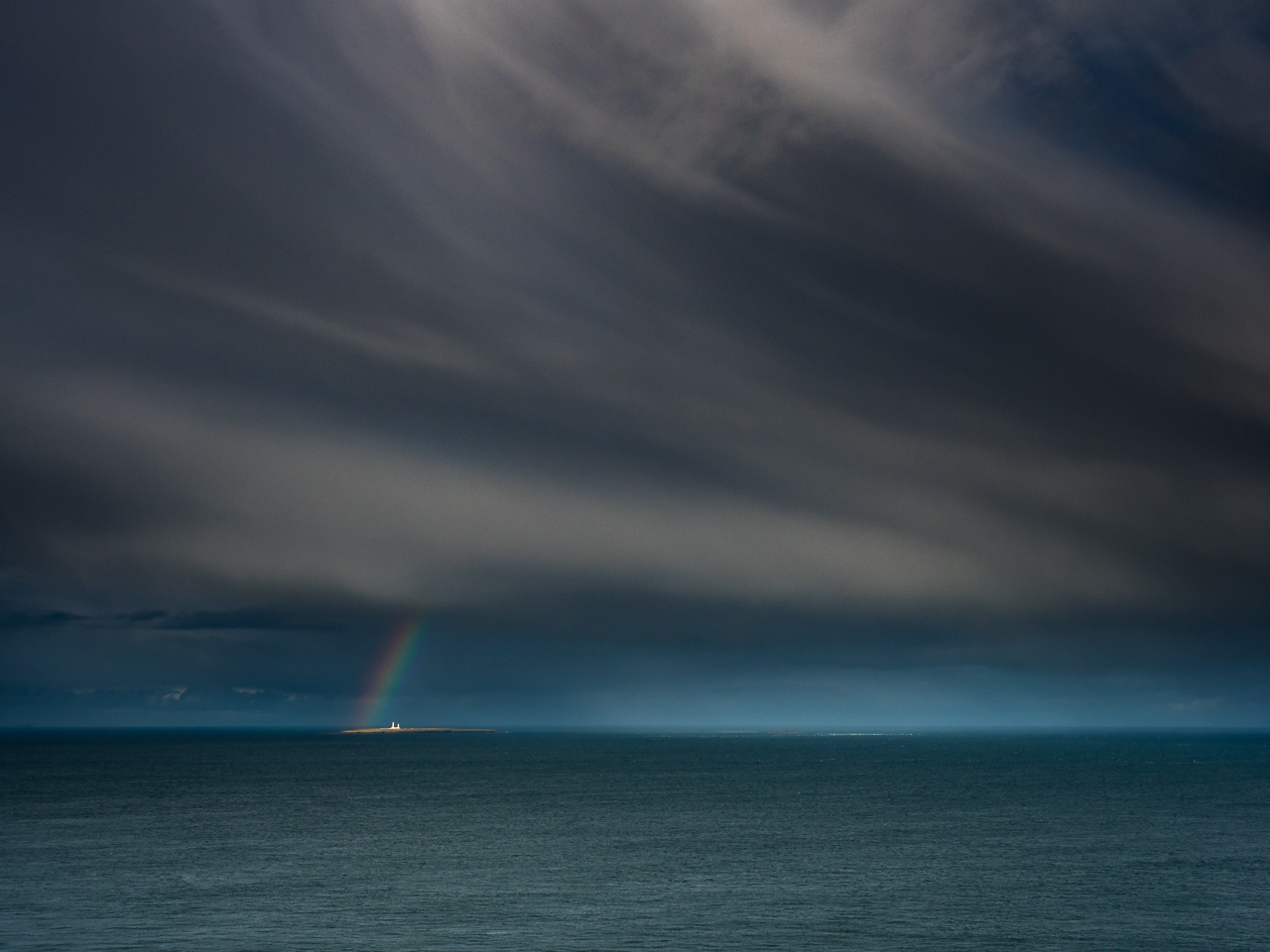Posted at 14:16h
in
Photography,
Travel
[caption id="attachment_3852" align="alignright" width="300"]

Lowestoft Ness on PAN-F in Rodinal 1+50[/caption]
On Monday 22 May at 0810, I stepped on to a half-submerged concrete jetty in Lowestoft, Suffolk. Awash with seawater and slick with seaweed, this tiny walkway is the easternmost point in Great Britain – and journey’s end for my trip to the four extreme points of the mainland. I looked out to a glittering horizon beneath the blazing sun as my trusty OM-4Ti’s timer beeped behind me. At 0815 the shutter clicked, setting the seal on a personal project that has seen me travel nearly 2,200 miles by road, rail, foot and flight.
Many of the pictures I’ve posted about this project so far have been digital, but my chosen medium for the actual project was film – specifically Ilford PAN F, a low-speed, fine-grain black and white film. 35mm film was the dominant photographic medium for much of the 20
th Century, and most readers will remember having used it for holiday snaps at some point. For a film enthusiast, though, the attachment to the medium runs a little deeper than holiday snaps, and it involves quite a bit more thought.
 Wrecked vehicles and buildings in Roadtown, the capital of the British Virgin Islands, following Hurricane Irma.[/caption]
In 16 years of Royal Air Force service, regular and reserve, I have served in Afghanistan, throughout the Middle East and at various spots in Africa and beyond. None of this prepared me for what I found when I deployed to the Caribbean on 8 September – at 12 hours’ notice – to support the UK’s massive humanitarian aid and disaster relief operation in the wake of Hurricane Irma. Irma – a violent, Category Five hurricane – cut a swathe through the region in early September and was followed within a fortnight by Hurricane Maria. Hard as I tried, my photography could scarcely capture the sense of loss and devastation the islands suffered.
My deployment took me to countries throughout the Caribbean, where I had to help record the story and the relief effort. The British Virgin Islands (BVI) linger in my mind for many reasons. Hurricane Irma stripped BVI’s trees bare, tore rooves from sturdy houses and lobbed cars, cargo containers and aircraft around like Matchbox toys. This was formerly a place of rolling green hills and neat houses, turned into a traumatised wasteland painted in shades of brown and grey.
Wrecked vehicles and buildings in Roadtown, the capital of the British Virgin Islands, following Hurricane Irma.[/caption]
In 16 years of Royal Air Force service, regular and reserve, I have served in Afghanistan, throughout the Middle East and at various spots in Africa and beyond. None of this prepared me for what I found when I deployed to the Caribbean on 8 September – at 12 hours’ notice – to support the UK’s massive humanitarian aid and disaster relief operation in the wake of Hurricane Irma. Irma – a violent, Category Five hurricane – cut a swathe through the region in early September and was followed within a fortnight by Hurricane Maria. Hard as I tried, my photography could scarcely capture the sense of loss and devastation the islands suffered.
My deployment took me to countries throughout the Caribbean, where I had to help record the story and the relief effort. The British Virgin Islands (BVI) linger in my mind for many reasons. Hurricane Irma stripped BVI’s trees bare, tore rooves from sturdy houses and lobbed cars, cargo containers and aircraft around like Matchbox toys. This was formerly a place of rolling green hills and neat houses, turned into a traumatised wasteland painted in shades of brown and grey.







